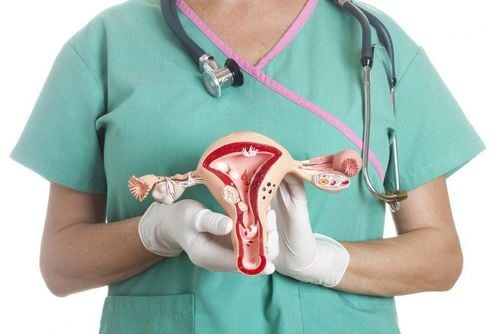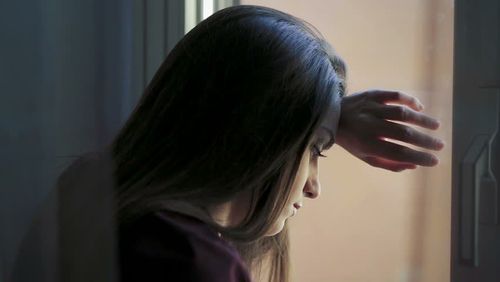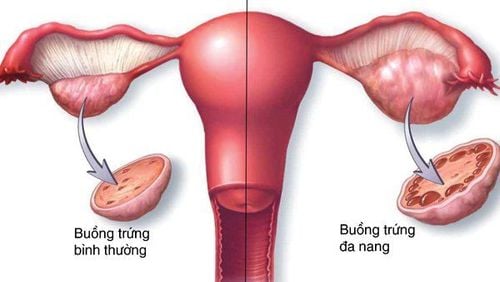This is an automatically translated article.
The article is professionally consulted by Dr., Dr. Ngo Thi Uyen - Obstetrician and Gynecologist - Department of Obstetrics and Gynecology - Vinmec Nha Trang International General HospitalIn women, the ovaries are known for their primary function of producing oocytes and for their endocrine function to produce female sex hormones. In cases where it is imperative to have an oophorectomy, women often worry about whether one or both ovaries can be removed or not.
1. Reasons why women have to have their ovaries removed
A unilateral or bilateral oophorectomy is a surgical procedure to remove the ovaries and sometimes the fallopian tubes. If a woman has one of the following conditions, an oophorectomy may be considered on one or both sides:
1.1 Ovarian cyst Ovarian cyst is a mass that occurs small fluid or solid mass in the ovary. In the cases of benign ovarian cysts, the surgeon usually removes the tumor leaving the healthy tissue of the ovary, only in difficult cases such as pelvic adhesions, too large tumors, twisted ovarian cysts. death... had to remove the ovaries.
1.2 Ovarian cancer Ovarian cancer begins when ovarian cells mutate abnormally and multiply uncontrollably. Women with a family history of breast or ovarian cancer have a higher risk of developing this type of cancer. This may cause the patient to have one or both ovaries removed, depending on the case.
1.3 Endometriosis in the ovaries During menstruation, the lining lining of the uterus sheds and exits the vagina with blood causing menstruation. If the lining of the uterus for some reason is outside the uterus, it is called endometriosis. The endometrial masses that develop on the outside of the uterus (in the abdomen, fallopian tubes, ovaries, etc.) act like the lining of the uterus, so they will still shed and bleed during menstruation. moon. However, these tissues are located outside the uterus, so menstrual blood cannot flow out but accumulates, causing internal bleeding and infection, leading to many other dangerous symptoms. This leads to a very high possibility of surgical intervention.
1.4 Ovarian abscess In many cases of infection, a sac of pus forms inside the fallopian tube and ovary, also known as an adnexal abscess. Then, depending on the condition of the ovary, the abscess may need to be removed.
2. Chances of getting pregnant after removing one ovary
Ovaries contain ovarian follicles and are the organs that produce female hormones, one of the important parts that determine a woman's reproductive function. During each menstrual cycle, follicles develop and are released mid-cycle. If the ovum meets the sperm, conception occurs. The chances of conception are highest when both ovaries are healthy.

Cơ hội mang thai sau khi cắt 1 bên buồng trứng là 50%
3. Notes after removing one ovary
After a unilateral amputation, these pelvic interventions can leave sticky scars. When you want to get pregnant and successfully fertilize, in addition to tracking the exact day of ovulation, the couple should abstain for at least 3-6 months after surgery to let the woman's body recover and help the ovaries remain healthy. back to normal operation.
If you are comfortable in a husband and wife relationship, but after about a year, you are still not pregnant, the wife needs to go to the hospital to check whether the other side's fallopian tubes are open or blocked, whether the other ovary is ovulating every month.
4. Can I have both ovaries removed?
Removal of both ovaries, the woman will not be able to produce oocytes and lose the ability to conceive naturally. At that time, do not lose your mind because you can completely get pregnant through in vitro fertilization, by asking for an ovum from another woman. Therefore, if both ovaries are removed, although spontaneous conception is not successful, it is still possible to become pregnant and have children thanks to other supportive techniques.
Thus, if for some reason a woman has to remove one ovary or even both, she should not be too worried. In case of unilateral removal, the chance of pregnancy is 50%, while in both cases, women can still have children thanks to IVF.
Please dial HOTLINE for more information or register for an appointment HERE. Download MyVinmec app to make appointments faster and to manage your bookings easily.













